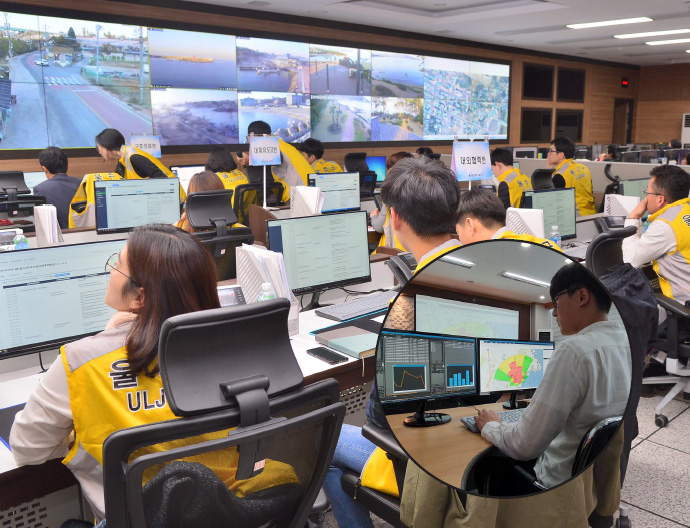Solution Products
RADIPS®
RAdiation DIsaster Prevention training System
RAdiation DIsaster Prevention training System Overview
The RAdiation DIsaster Prevention training System (RADIPS) is the world's first training system designed to enhance the radiation disaster response capabilities of local governments and relevant agencies responsible for nuclear facilities. Through simulation, it creates scenarios that closely resemble real-life situations by applying accident assessment of nuclear power plants and radiation dispersion technology. It also incorporates various transportation assets such as road networks, railways, disaster-related facilities, vehicles, trains, ships, helicopters, and more within the vicinity of nuclear power plants.

Key Software Components of the RAdiation DIsaster Prevention training System (RADIPS)
- Disaster Management Information Software provides functions related to citizen and disaster management organization resource management and training scenario management.
- Situation Management Information Software offers functions for managing situation maps, terrain information, and command input/output (UI) management.
- Radiation Analysis Software includes features for radiation assessment, prediction, and analysis of contamination and radiation dispersion.
- Simulation Engine Software provides functions for system management, training control, citizen introduction, and disaster response activity simulation.
- Location Tracking Software supports tasks such as tracking the locations of disaster response activities and citizen organizations, as well as transmitting and receiving video information from the training site.
- Post-Training Analysis Software offers capabilities for recreating training scenarios and generating analysis data based on training outcomes.

Application of Four Key Technologies
- Agent-Based Modeling (ABM) Technology: This technology utilizes intelligent agents as the basis for modeling behaviors and incorporates five layers of behavior in the simulation.
- Radiation Disaster Environment Modeling Technology: This is a key technology based on Modeling & Simulation. It is composed of six software modules designed for training simulation and analysis of simulation results.
- Location Tracking Mobile App Technology: An Android Platform-based mobile app is employed to provide real-time reporting of trainee locations and training situations.
- Real-time Multi-Screen Support Technology: This technology facilitates the sharing of disaster response information through a web server, enabling the exchange of information between the training control room and mobile devices.
Primary Training Benefits
- Firstly, it fosters a proficiency in response procedures and tactics in the event of a radiation disaster.
The implementation of simulated training for various types of radiation disaster scenarios improves the practical abilities of on-site disaster response personnel. - Secondly, it refines the Radiation Disaster Response Action Manuals.
Through the analysis and application of different radiation disaster scenarios and training outcomes, the action manuals are scientifically enhanced to include response procedures for various radiation disaster phases. - Thirdly, it yields benefits in safety accident prevention and budget reduction.
By replacing real training with simulations, the occurrence of safety incidents such as injuries and vehicle accidents is avoided, resulting in budget savings.

Scenario DB Building

Training Situation










